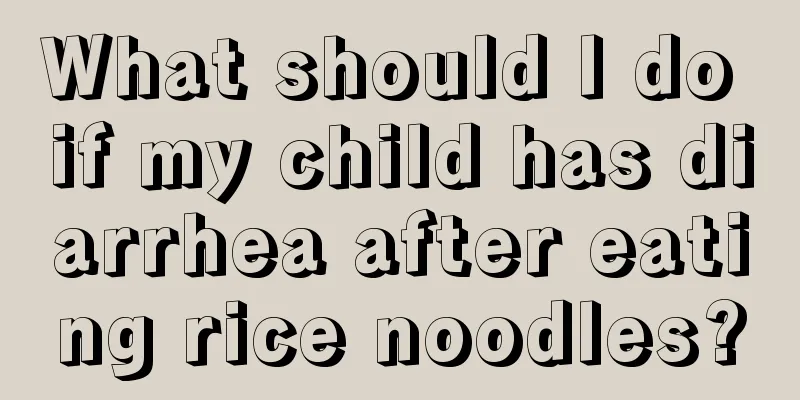What to do if your child keeps coughing

|
As a parent, the last thing we want to do is to see our children get sick. However, how is it possible not to get sick in this world? Colds, fevers, and coughs are diseases that children are more likely to get, which has a lot to do with their low immunity. Watching children cough makes me feel very uncomfortable. What should I do if children keep coughing? How to prevent and treat children’s cough? If your baby coughs and his tongue is coated with white coating, it is a wind-cold cough, which means that the child has a severe cold. The sputum from the cough is thinner, white and sticky, and he has a stuffy nose and runny nose. At this time, he should eat some warm, expectorant and cough-relieving foods. If the child's tongue coating is yellow or red, it is a wind-heat cough, which means that the child has a lot of internal heat. The phlegm in the cough is yellow, thick, and difficult to cough up, and there is a sore throat. At this time, the child should eat some food that clears the lungs, resolves phlegm and relieves cough. Internal injury coughs are usually long-term and recurring. At this time, parents should pay attention to feeding their children foods that regulate the spleen and stomach, nourish the kidneys, and replenish the lung qi. The specific methods are as follows: 1. Ginger + brown sugar + garlic. When a child catches a cold, drinking warm ginger and brown sugar water can play a good therapeutic role. If the child also has a cough, add 2 to 3 cloves of garlic to the ginger and brown sugar water and cook together. Cook over low heat for 10 minutes to cook off the spiciness of the garlic so that the child will be willing to drink it. 2. Steamed garlic water: Take 2 to 3 cloves of garlic, smash them, put them in a bowl, add half a bowl of water, put in a piece of rock sugar, cover the bowl and put it in the pot to steam. After boiling over high heat, switch to low heat and steam for 15 minutes. When the garlic water in the bowl is warm, feed it to your child. The garlic does not need to be eaten. Generally 2 to 3 times a day, half a bowl each time. Garlic is warm in nature and enters the spleen, stomach and lung meridians. It is very effective in treating cold coughs and kidney deficiency coughs. It is also convenient and simple, and children are willing to drink it. 3. Roast the oranges directly over low heat, turning them over constantly until the peel turns black and hot air comes out of the oranges. Wait for the orange to cool down a bit, peel the peel and let your child eat the warm orange segments. If it is a big orange, the child can eat 2 to 3 slices at a time. If it is a small tribute orange, the child can eat one at a time. It is best to take it with garlic water, 2 to 3 times a day. Oranges are warm in nature and have the effect of resolving phlegm and relieving cough. After eating roasted oranges, the amount of sputum will be significantly reduced, the antitussive effect is very obvious, and children are willing to eat it. 4. Scrambled eggs with sesame oil and minced ginger: Put a small spoonful of sesame oil into the wok, add the minced ginger when the oil is hot, fry it in the oil for a while, then beat in an egg and stir well. When children have a cough due to cold or physical weakness, let them eat this medicine once every night while it is hot before going to bed. If you persist in eating this medicine for a few days, you will see obvious results. 5. Pear + Sichuan peppercorns + rock sugar: Wash a pear, cut it in half horizontally, remove the core, add 20 Sichuan peppercorns and 2 rock sugars, put the pear halves together in a bowl, and steam it for about half an hour. One pear can be eaten in two times. Steamed pears with pepper and rock sugar are very effective in treating cold and cough, but some children don’t like the taste of pepper, so parents can choose for themselves. The above are dietary recipes for treating cold and cough. While parents use these methods to treat the disease, they should also pay attention to the fact that the following cold foods should not be eaten by children: mung beans, crabs, clams, snails, snails, persimmons, grapefruit, bananas, kiwis, sugarcane, watermelons, melons, bitter melons, water chestnuts, arrowheads, kelp, seaweed, raw radishes, eggplants, artemisia selengensis, lotus roots, winter melons, loofahs, sweet potatoes, etc. And the child has been crying a lot recently, maybe because he is frightened. You can ask your child to find out the reason. Coughing is not a very serious disease, but if the cough is serious or long-term, it can easily develop into lung disease or even tuberculosis, which is something every parent does not want to see. What should we do if children keep coughing? This still requires parents to take care of their children carefully, prevent them from catching cold, and ask them to drink more hot water. |
<<: Is it good for children to take a bath every day?
>>: What to do if a seven-year-old child has stomach pain
Recommend
Methods for treating myopia and amblyopia in children
Nowadays, there are too many TVs and mobile phone...
How to brush your baby's teeth?
In life, since parents of children are very conce...
Causes of uneven back of newborn's head
Many newborns have uneven backs of the heads, so ...
How to deal with the fetus after induced abortion
Due to physical reasons or fetal development, som...
Introduction to Children's Nutrition Recipes
With the progress of life, people pay more and mo...
What kind of milk powder should a one-year-old baby eat if he has a bad stomach?
One-year-old babies are in a critical period of p...
How to treat pediatric pharyngitis?
Some children suffer from pharyngitis. In this ca...
How to strengthen your baby’s spleen and stomach?
Nowadays, scenes of parents chasing after their c...
Is nephritis serious in children?
Generally speaking, nephritis often occurs after ...
What to do if your baby wakes up when you put him down while you are holding him
Nowadays, almost every family has only one child,...
Can babies with skin allergies take a bath?
Many babies have allergic skin. They will have al...
How to correct crossed eyes in babies?
If the baby already has strabismus, parents can o...
Is it serious if a child has occult blood?
Children's occult blood 10 is a result that m...
What ointment should I use on a child's scratched face?
Children are naughty. Often when several children...
What are the causes of cervical spondylosis in adolescents?
With the increase in population, it not only crea...









